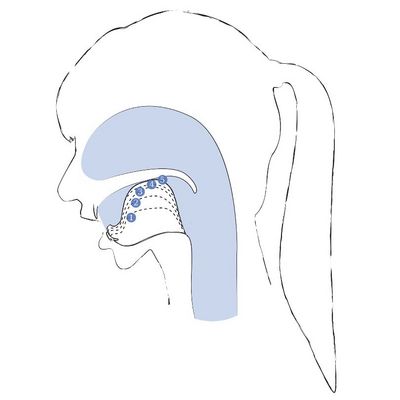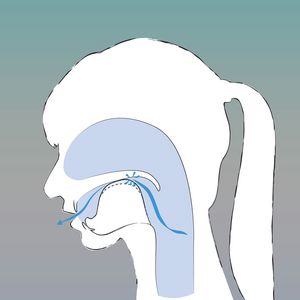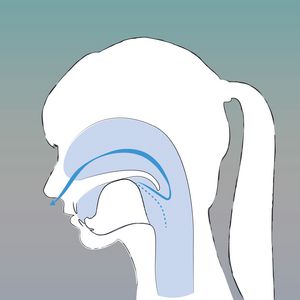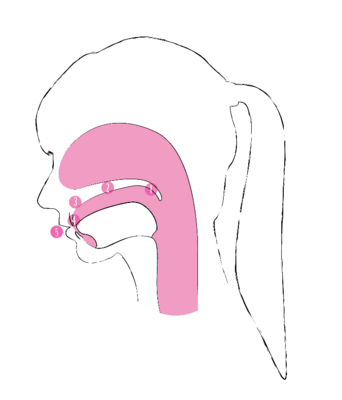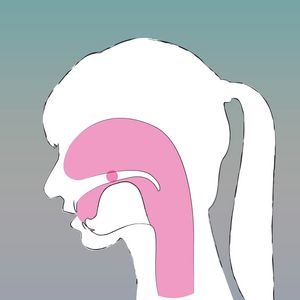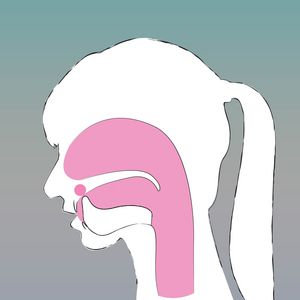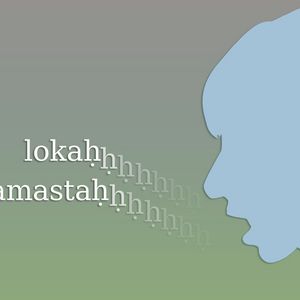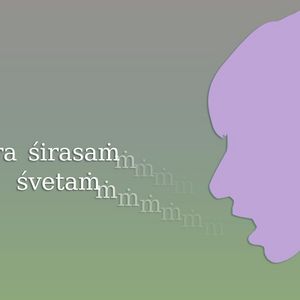Classes of speech sounds
The Sanskrit alphabet sorts speech sounds according to their type; all in all, there are 9 vowels, 20 plosives, 5 nasals, 4 semivowels and 4 fricatives.
Places of articulation
Within each class of speech sound (vowel, semivowel, fricative, plosive, nasal), Sanskrit classifies sounds according to their place of articulation. Here, we differentiate between five different locations, from back to front: guttural, at the palate (palatal), behind the teeth (retroflex), at the teeth (dental) and at the lips (labial).
Visarga (ḥ) and Anusvāra (ṁ)
Visarga (ḥ) and Anusvāra (ṁ) are a special feature of the Sanskrit language. These two sounds are pronounced differently, depending on the sound that follows. Visarga (ḥ) is pronounced as a fricative with the same place of articulation as the following sound, Anusvāra (ṁ) as a nasal with the same place of articulation as the following sound.



